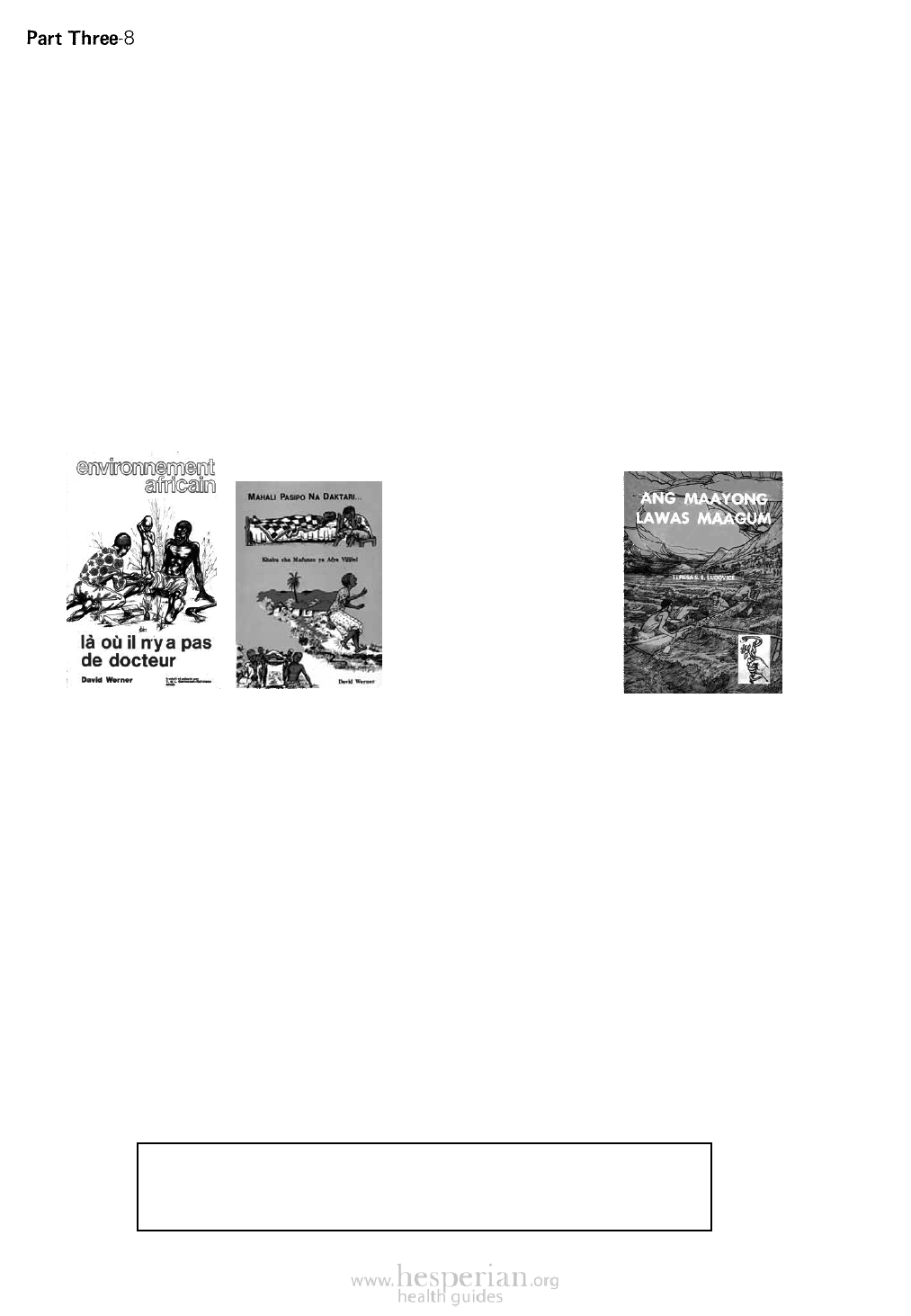
Prart Three-8
ADAPTING WHERE THERE IS NO DOCTOR
TO THE LOCAL SITUATION
The original Spanish edition of Where There Is No Doctor was written
specifically for use in the mountain area of Western Mexico. In the English version,
we tried to make the book so it could be used in many different countries. But
clearly, a book that can be used in many areas will not be completely appropriate
to any single place. Therefore, some of the information and ideas in the book will
apply to your area. Others will not. And some basic information will certainly be
missing.
Health workers should recognize the limitations of the book and never use it as
their ‘bible’. (Unfortunately, this has happened in some health programs.)
Ideally, Where There Is No Doctor (or any reference book) should be adapted or
rewritten for each area. This has already been done in some parts of the world.
SENEGAL
(French)
TANZANIA
(Swahili)
The editions in
Senegal and Tanzania
have been adapted and
the pictures redone to
fit the local people and
customs.
In the Philippines, a
completely new book
has been written, using
ideas from Where
There Is No Doctor.
PHILIPPINES
(llonggo)
Unfortunately, not every area will have the time and money to write their own
villager’s health care handbook, or to adapt the whole of Where There Is No
Doctor. Where complete adaptations are not possible, we suggest that training
programs produce sheets or pamphlets to be used along with the book. These can
cover additional information that relates to local needs, problems, and customs.
Such information sheets might include:
• Local names of illnesses, and ways of looking at sickness and health.
• Examples of traditional forms of healing: beneficial and harmful.
• Names (including brand names and comparative prices) of medicines that are
available locally. Or at least have students write this information into the Green
Pages of their books.
• A list of commonly misused medicines and mistaken medical practices in your
area, with explanations and warnings.
• Information about the diagnosis, treatment, and prevention of health
problems that are important in your area but are not included in Where
There Is No Doctor.
Discuss with your students which parts of their books are
appropriate to your area and which are not. Encourage them
to question the truth or usefulness of anything they read.